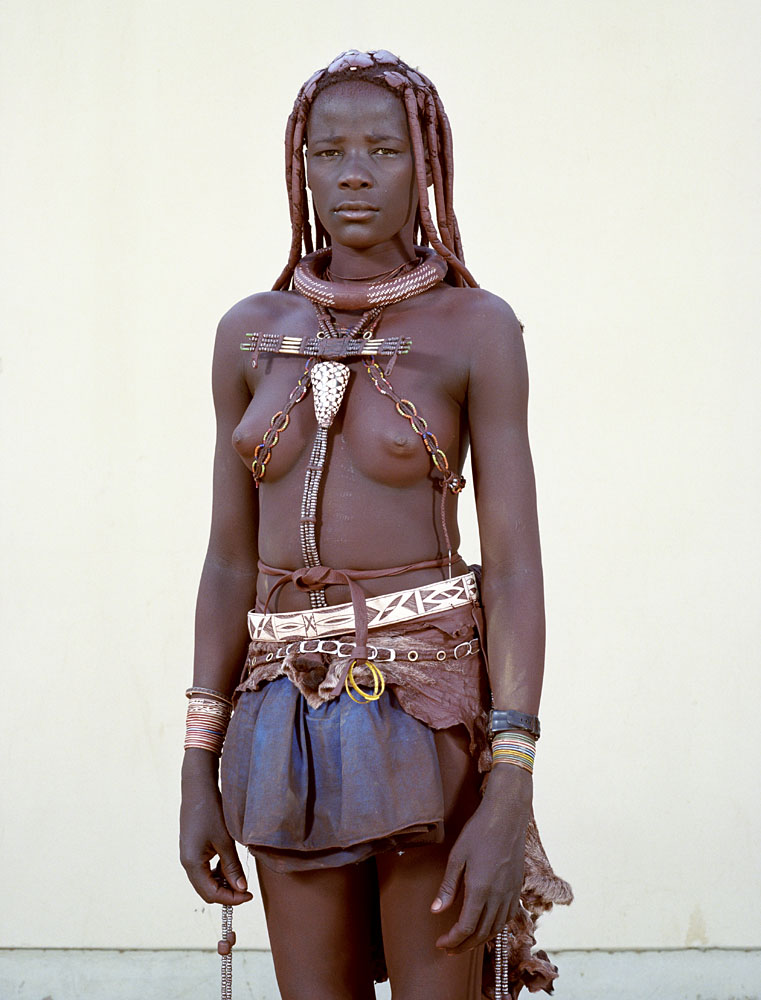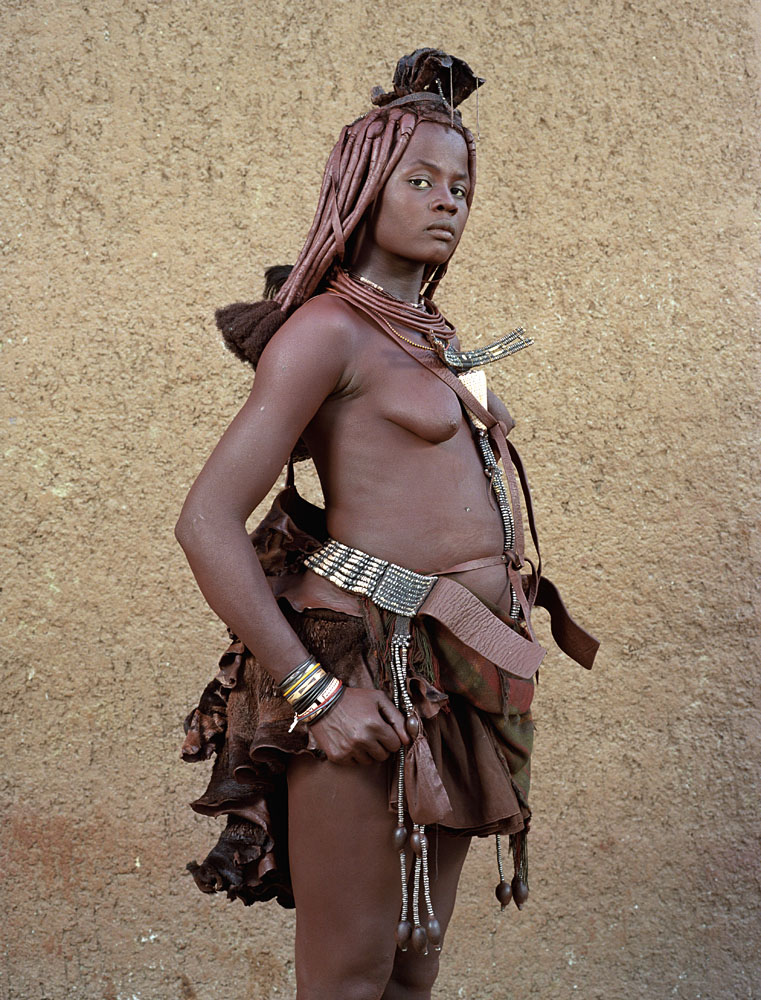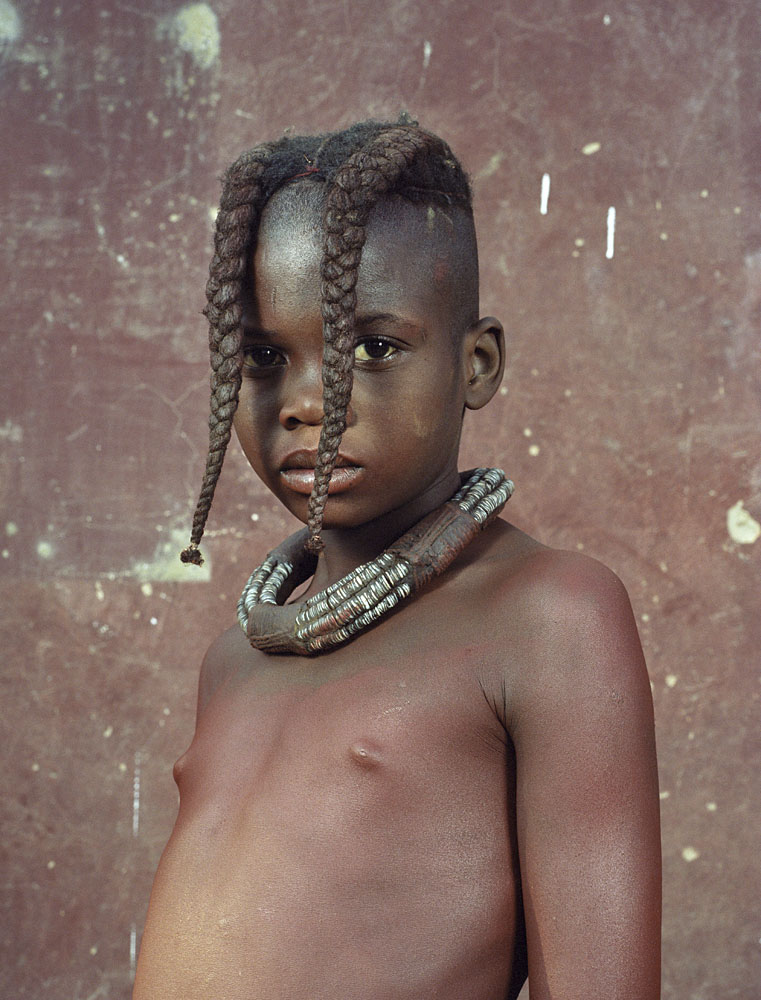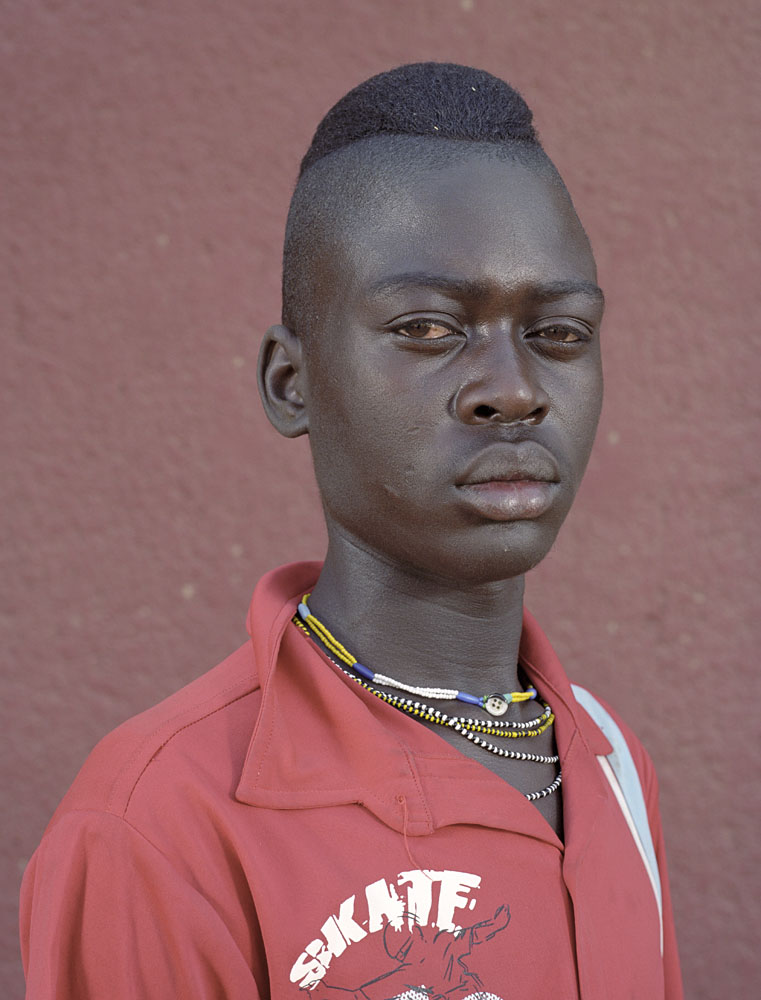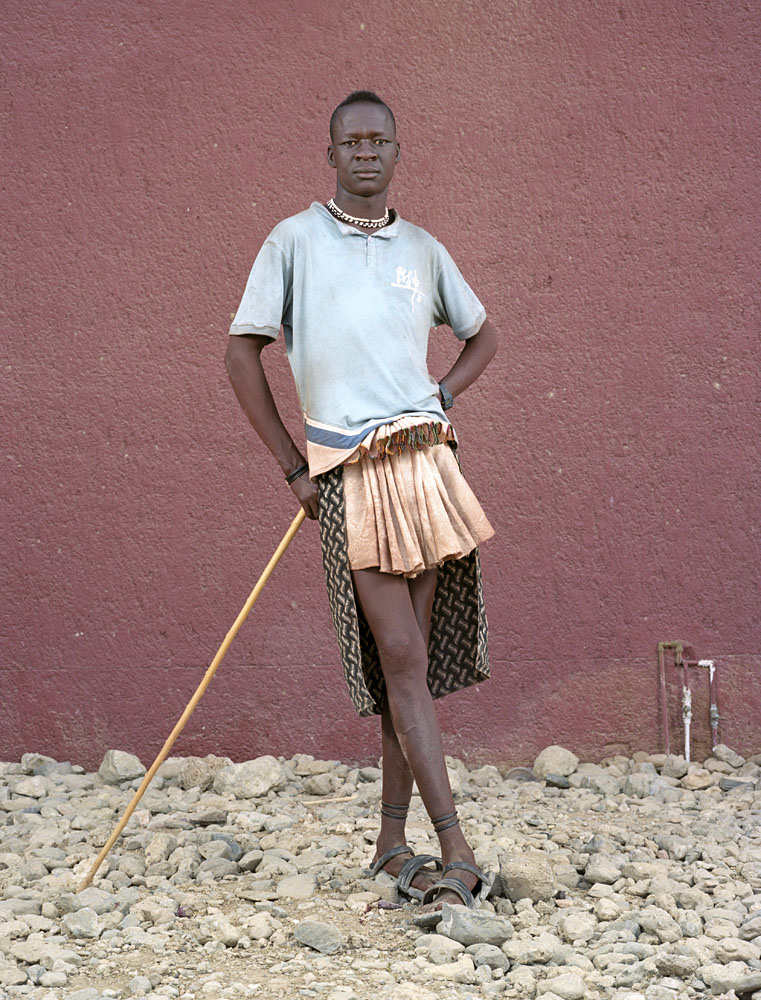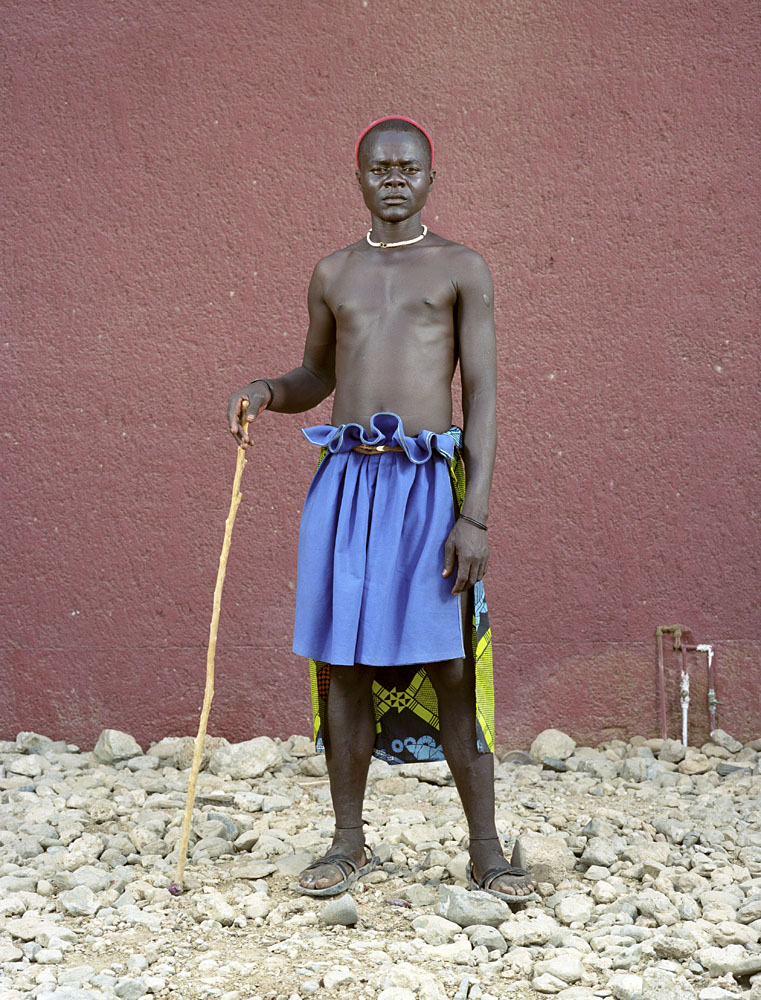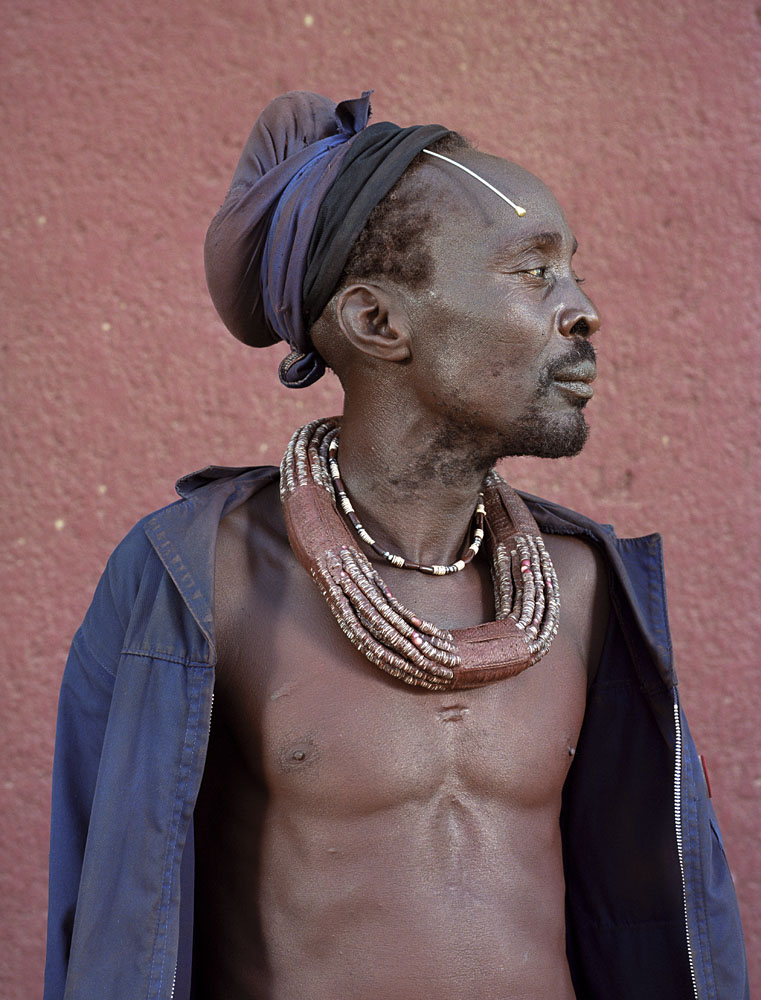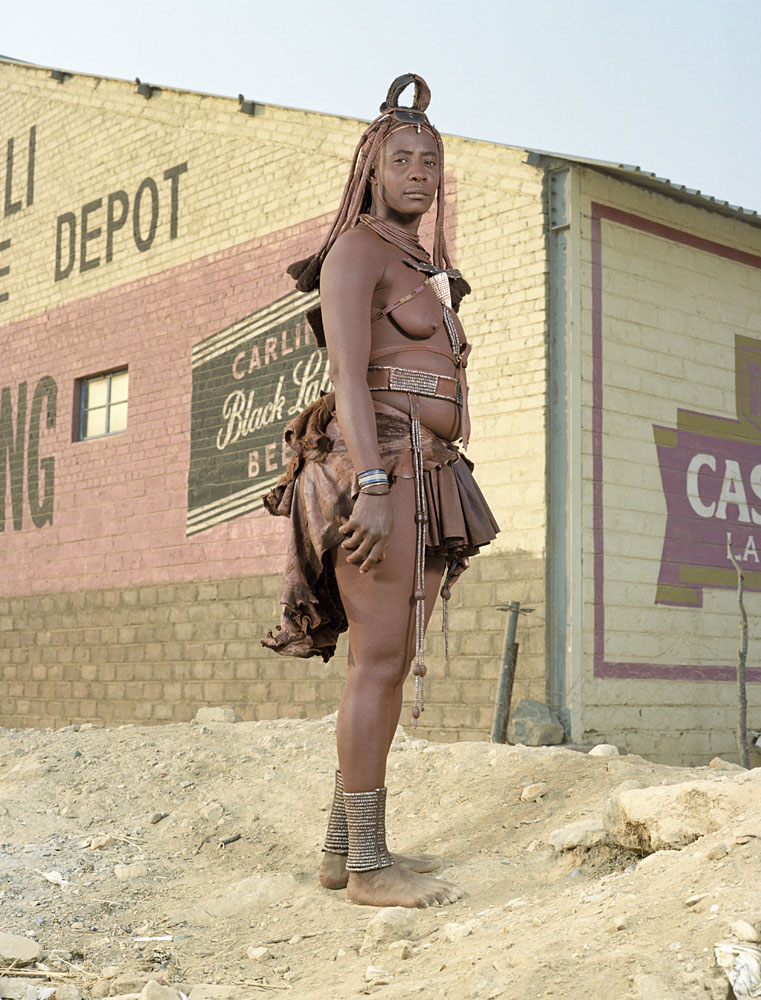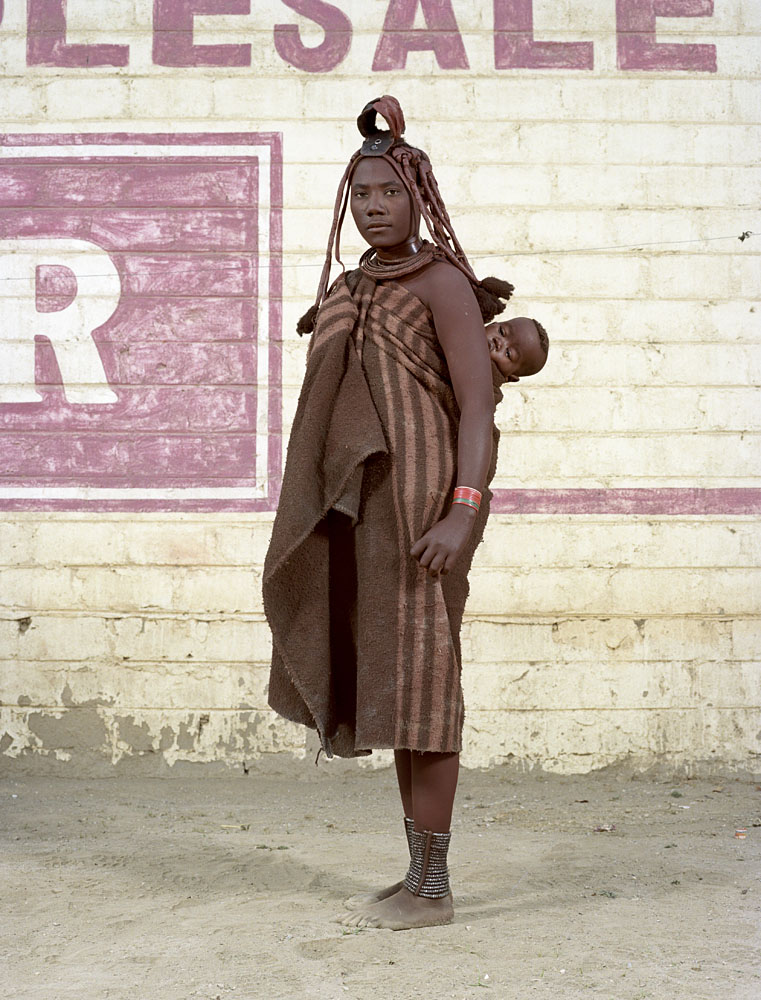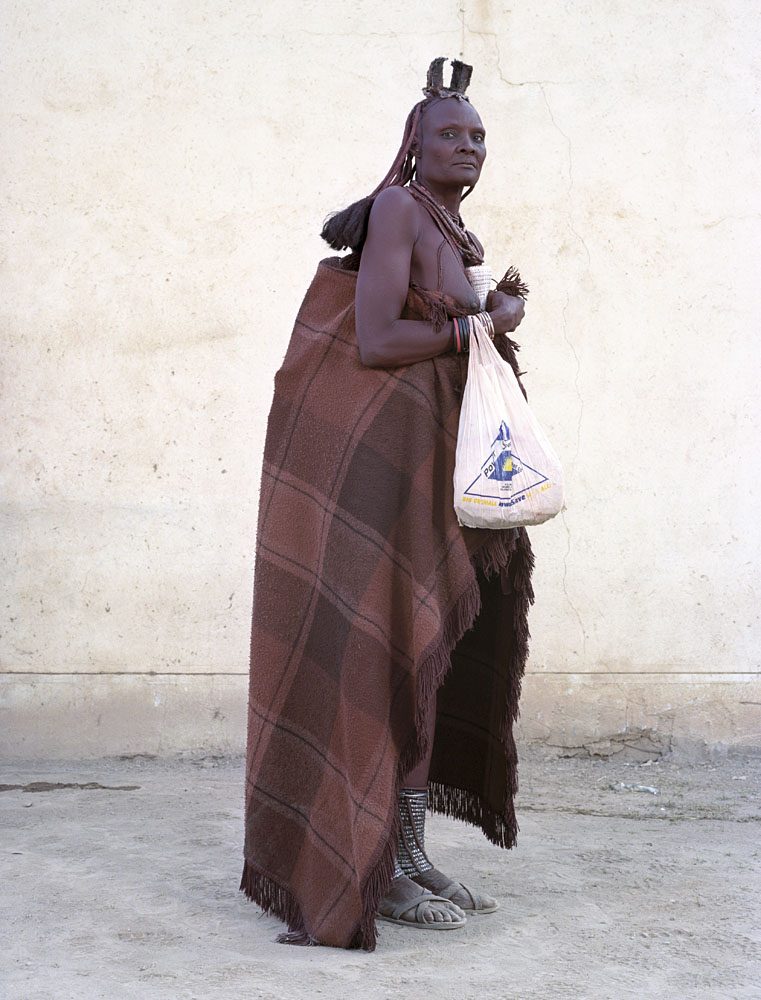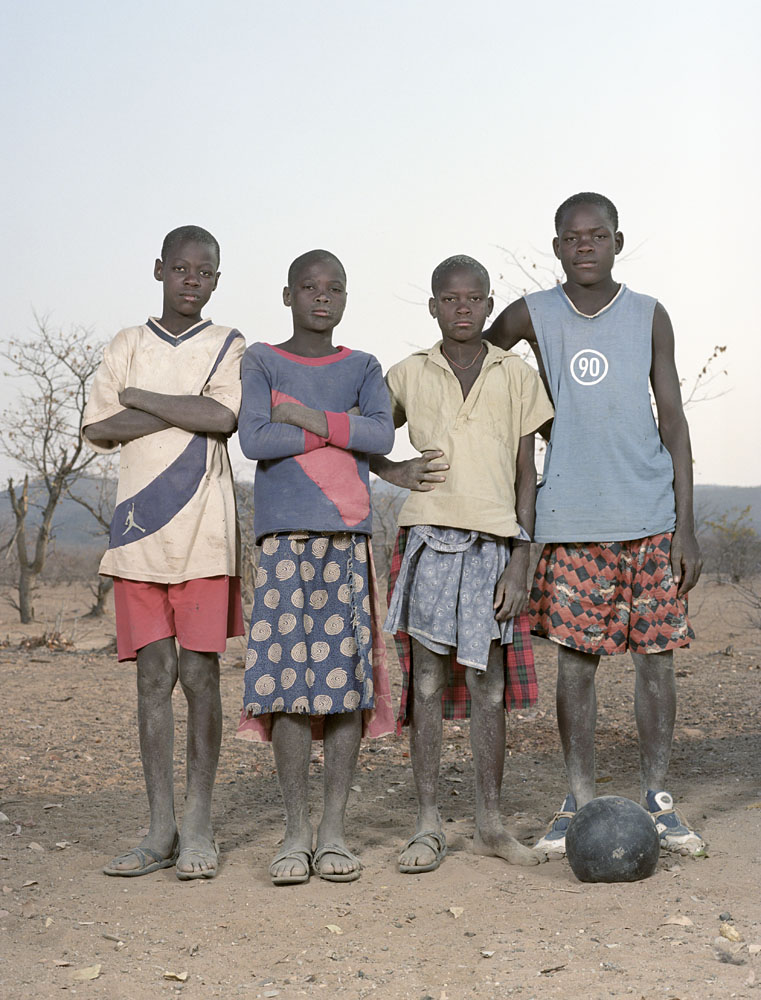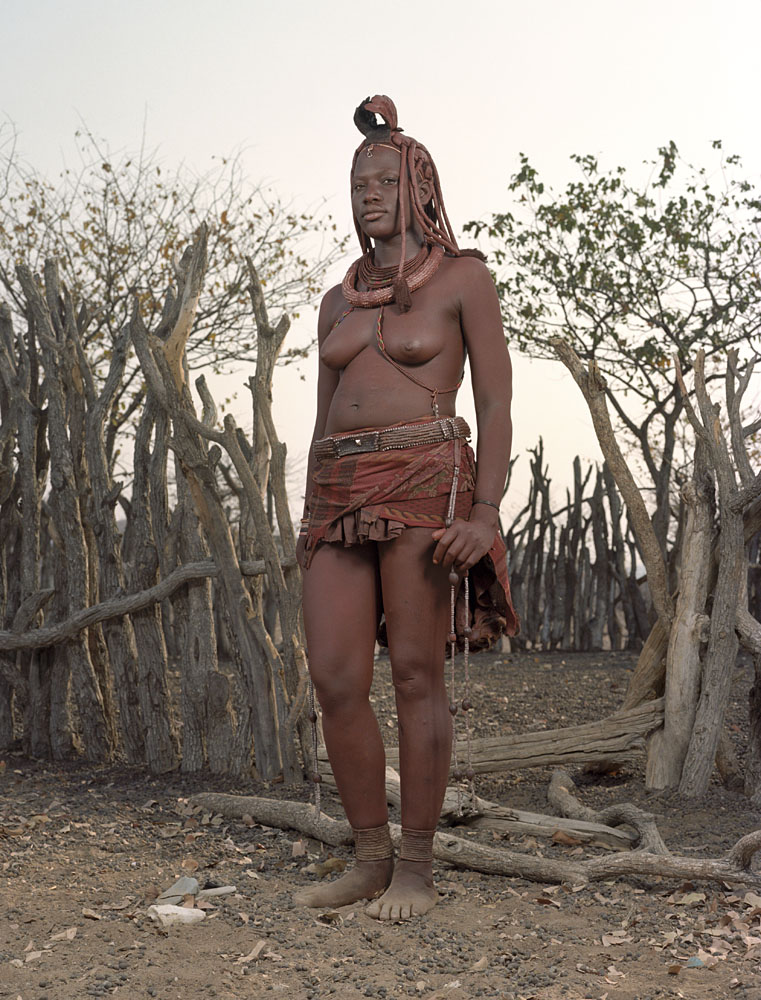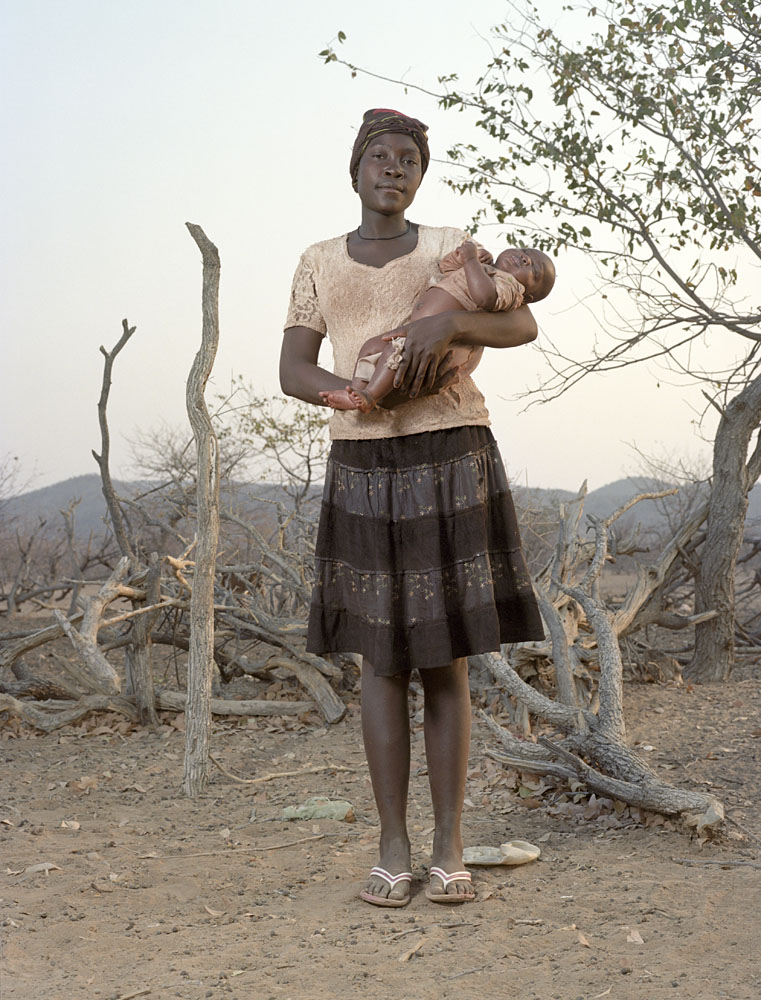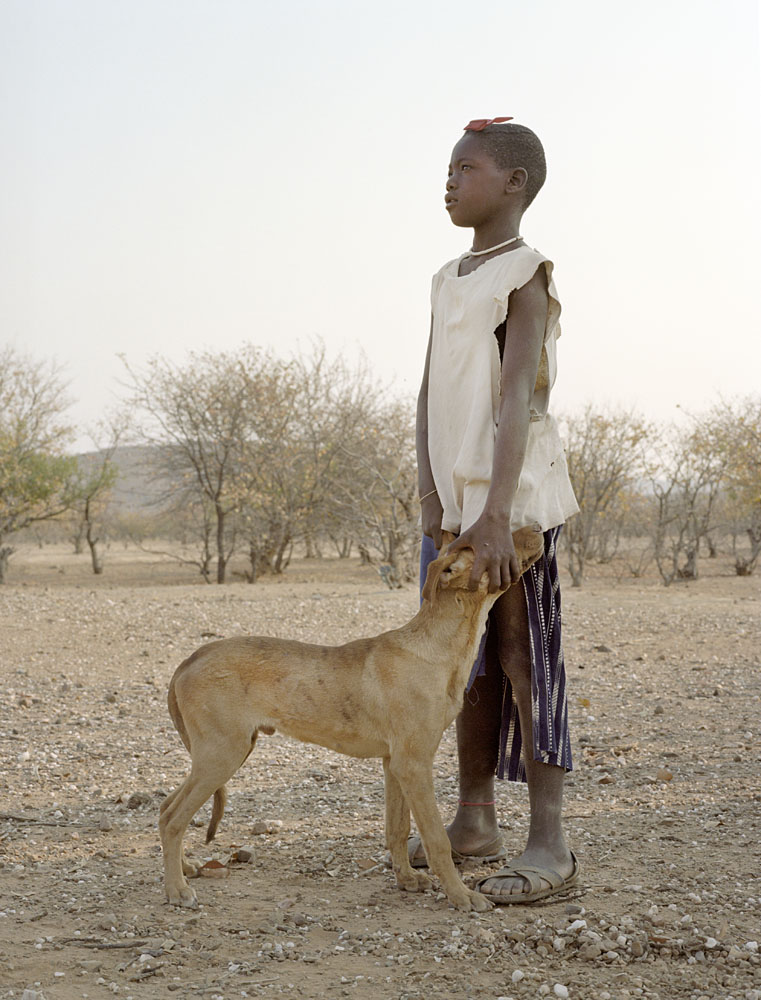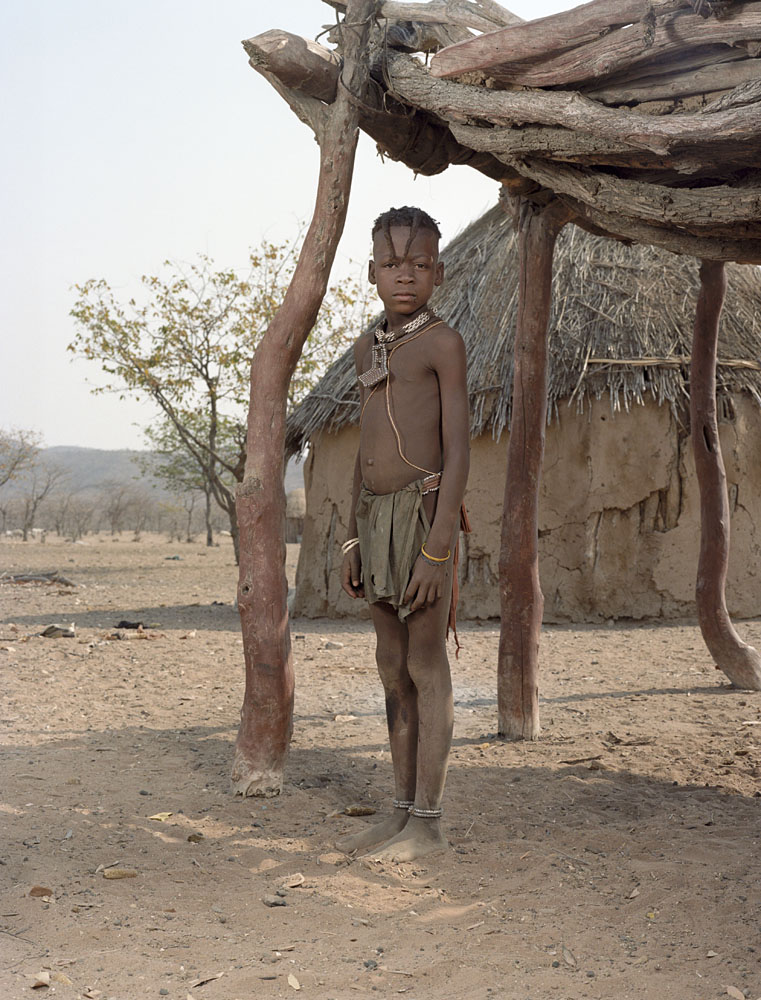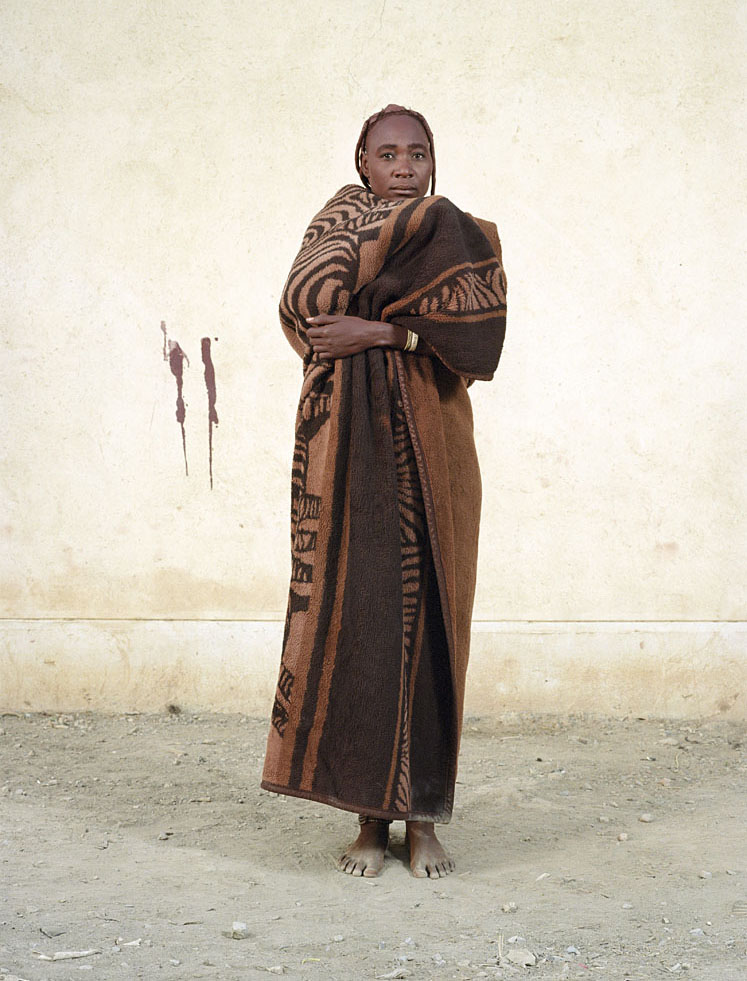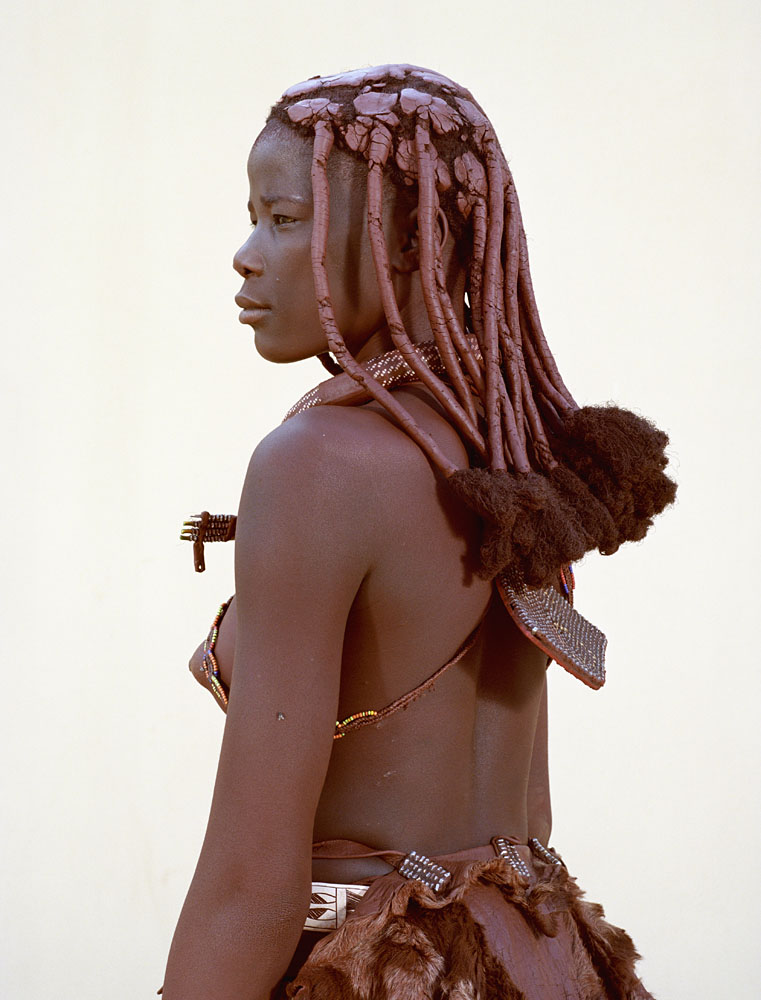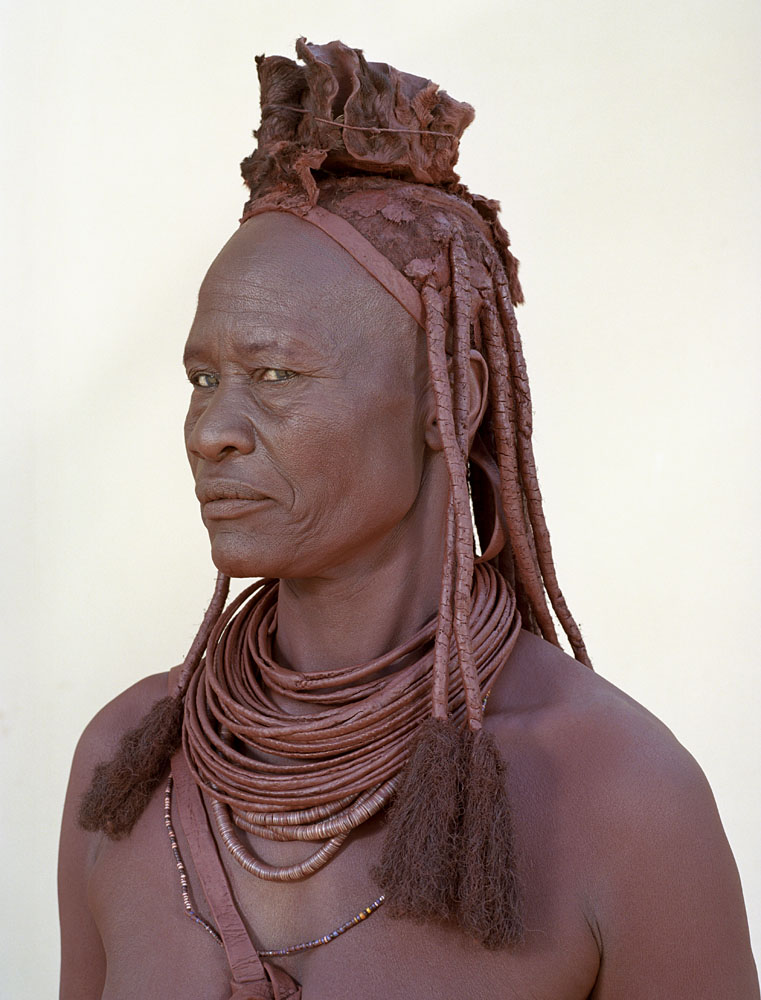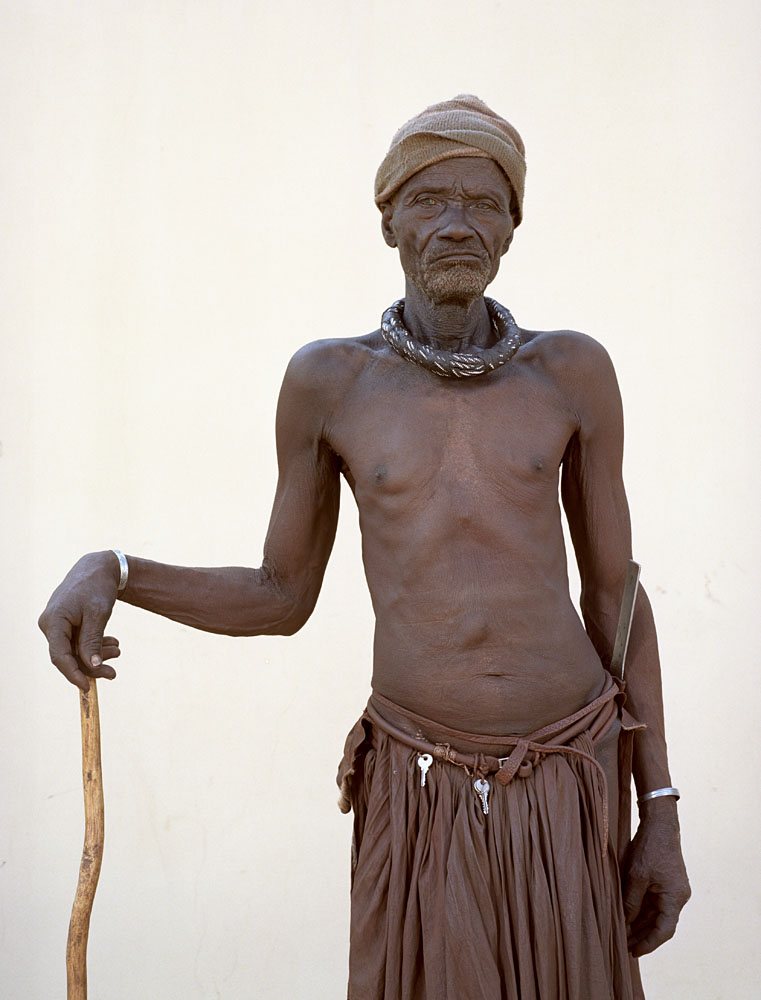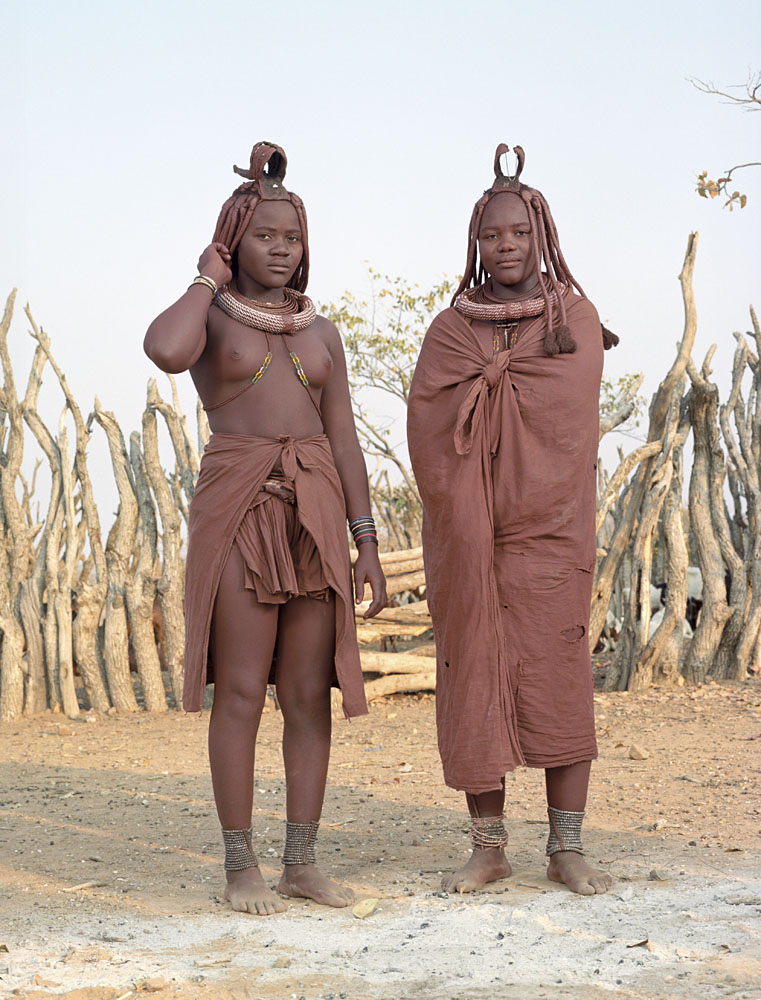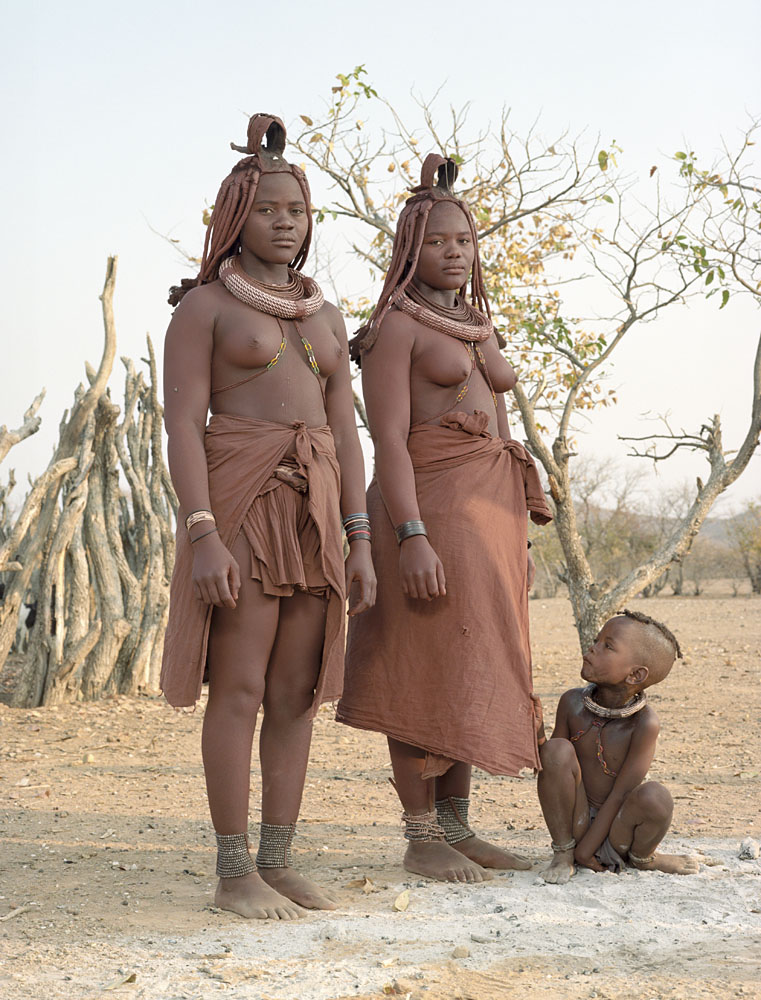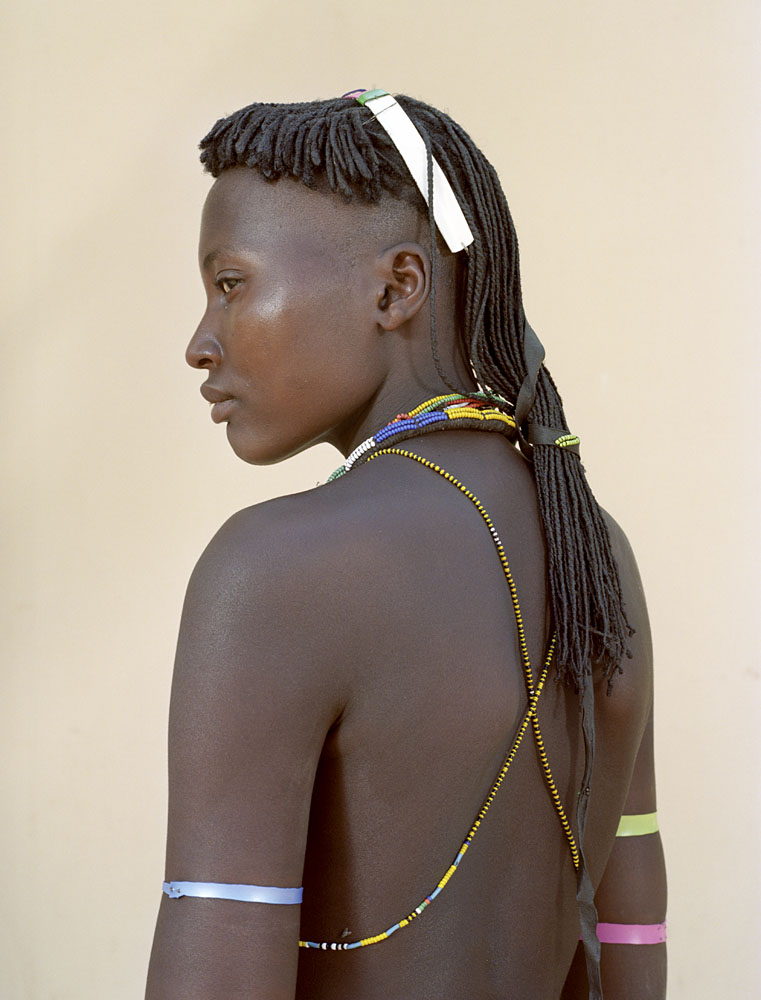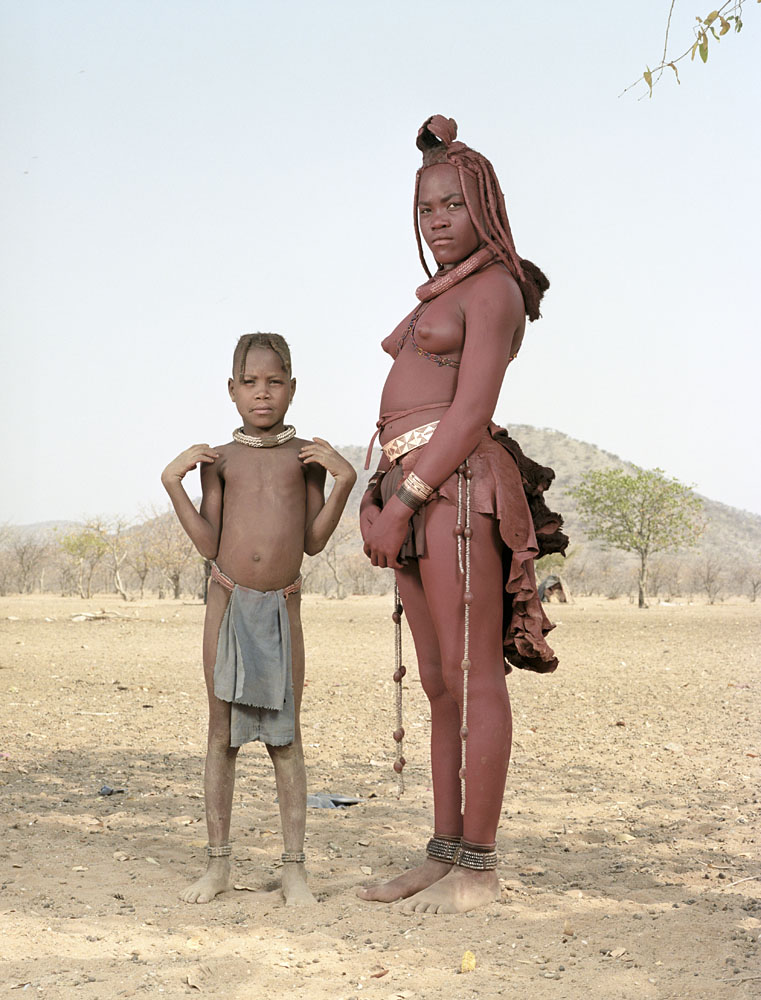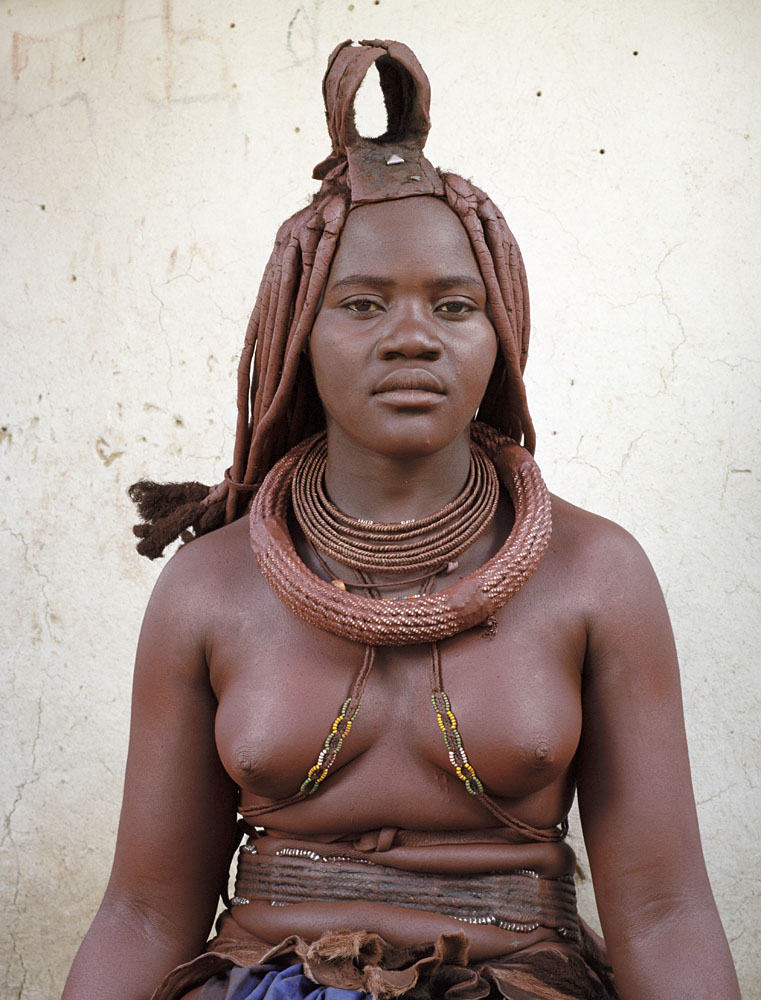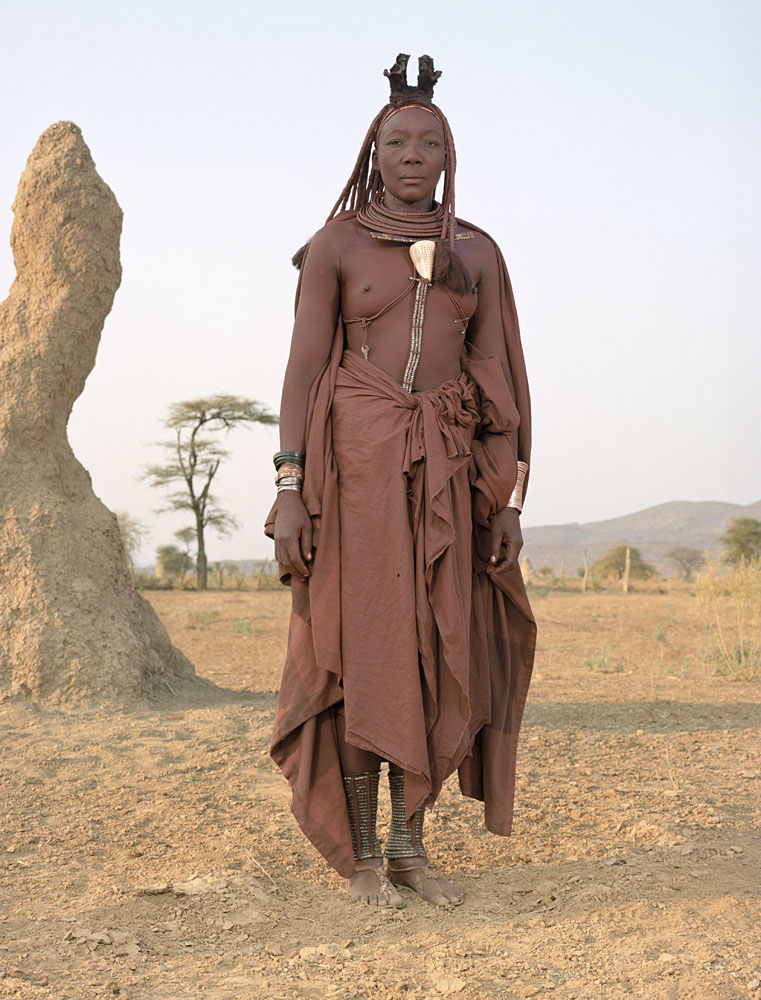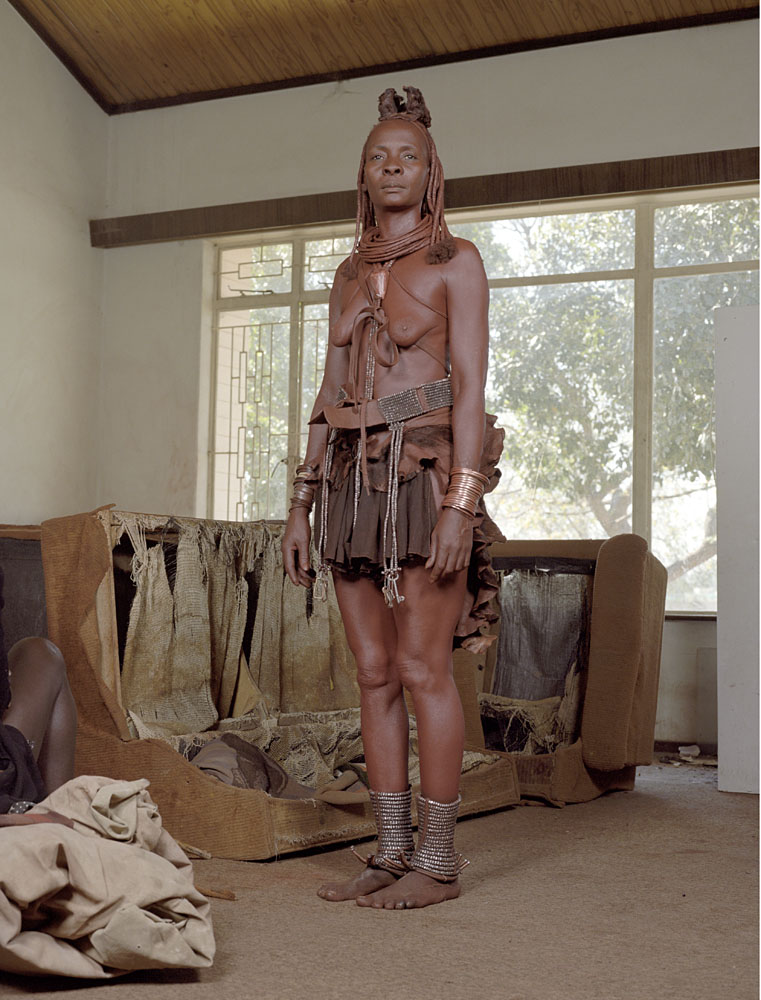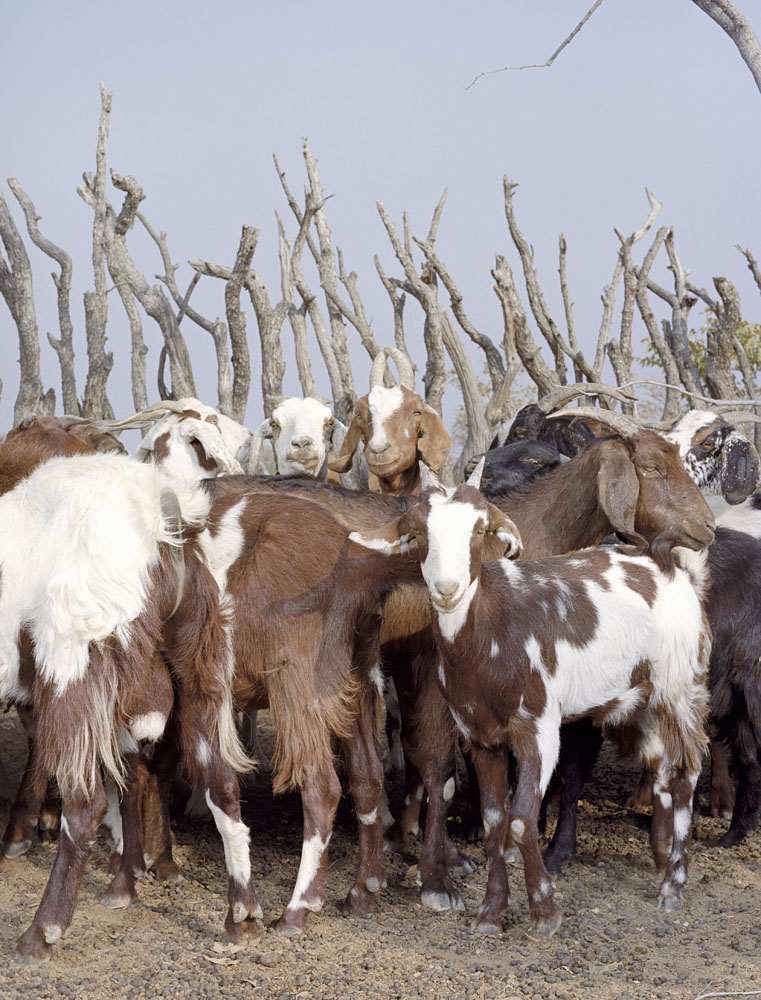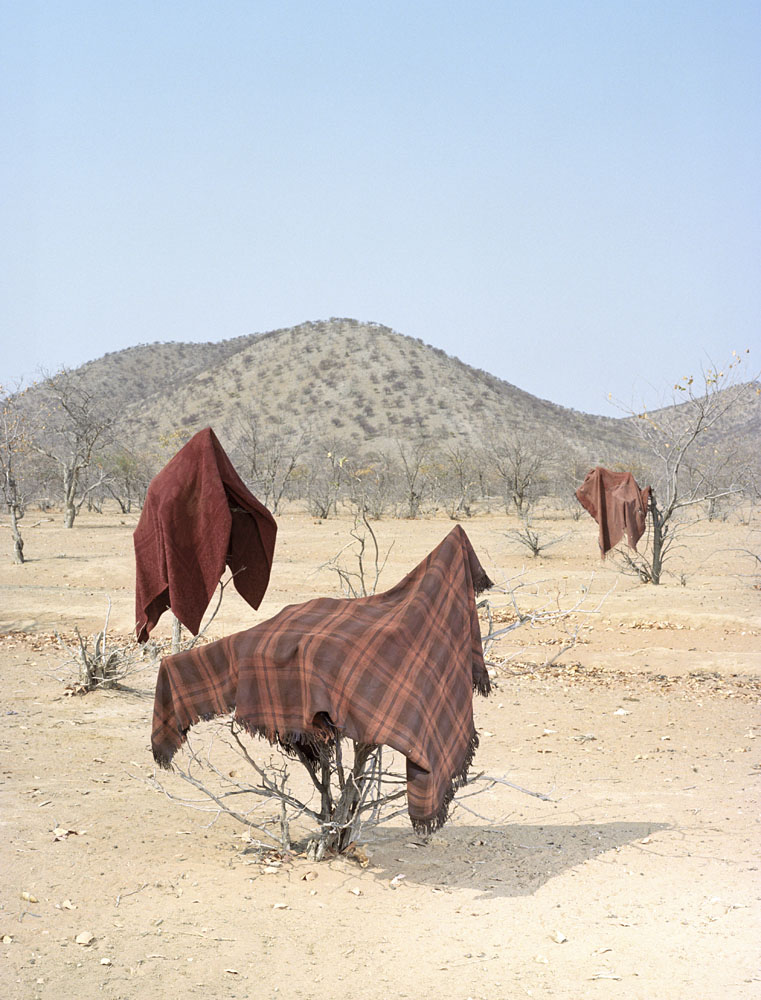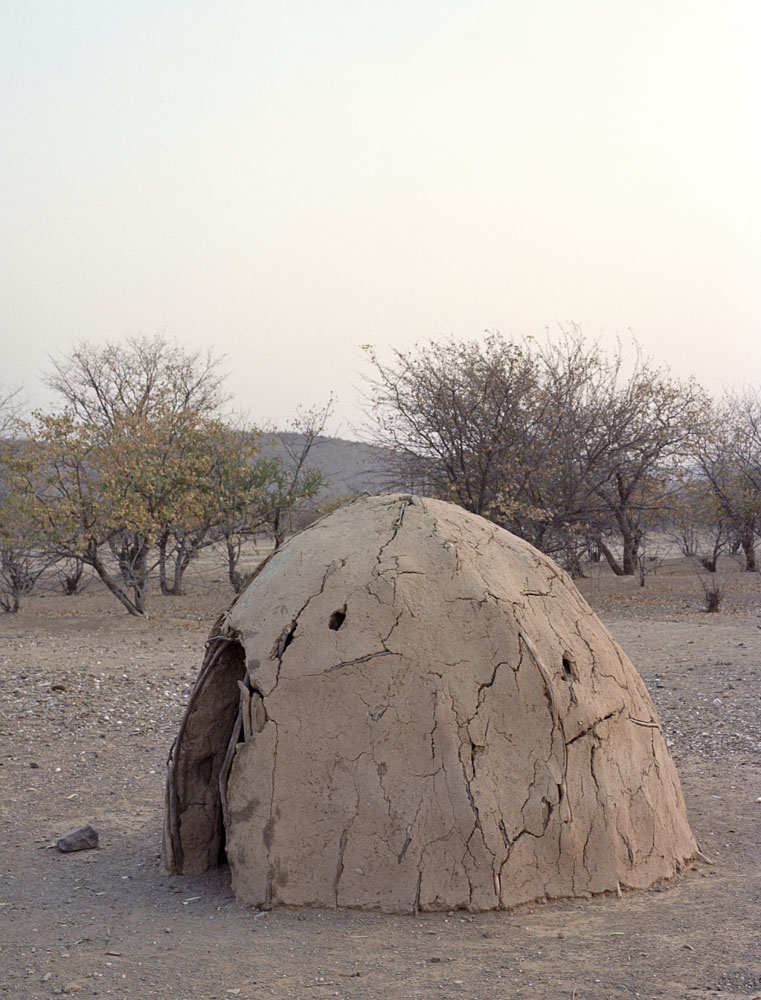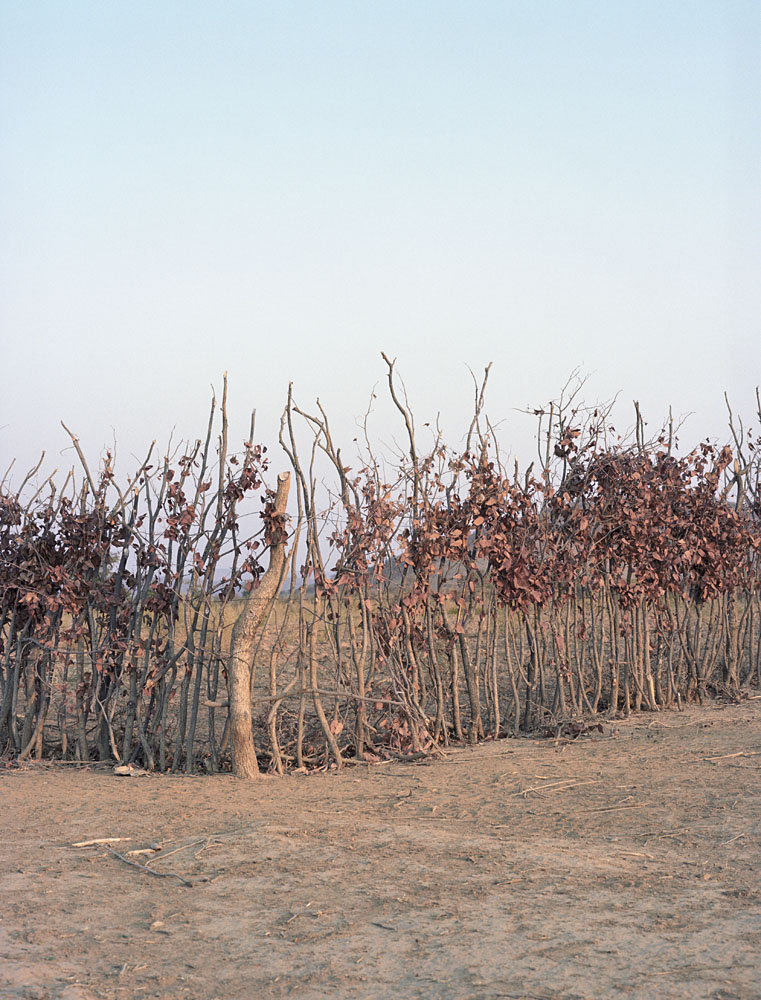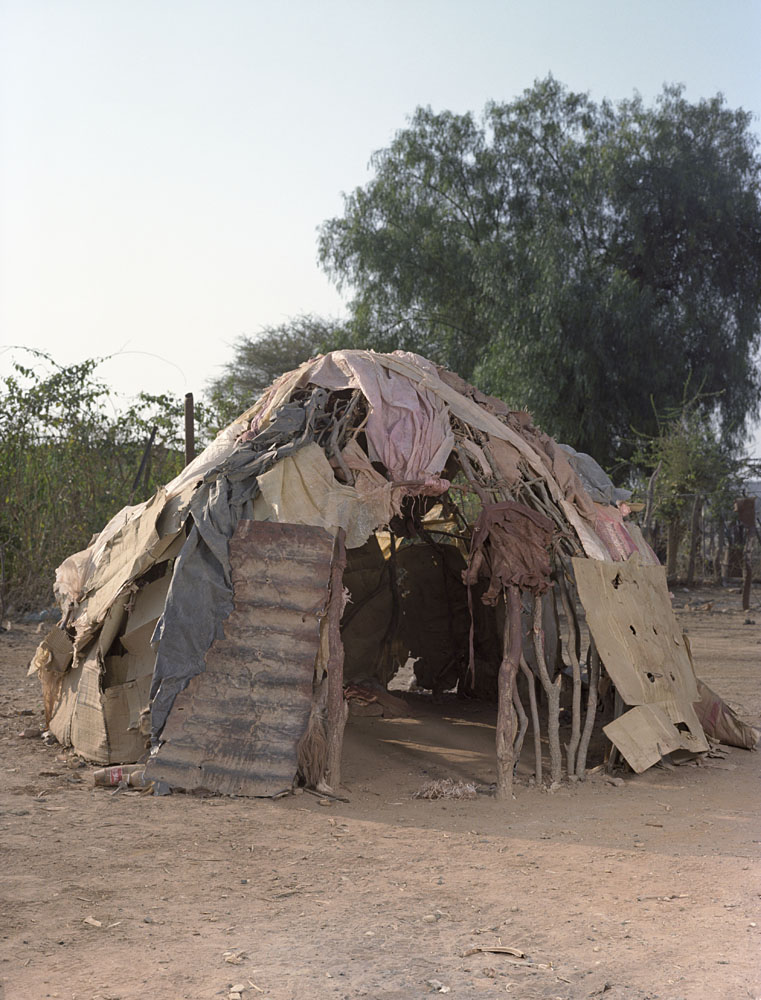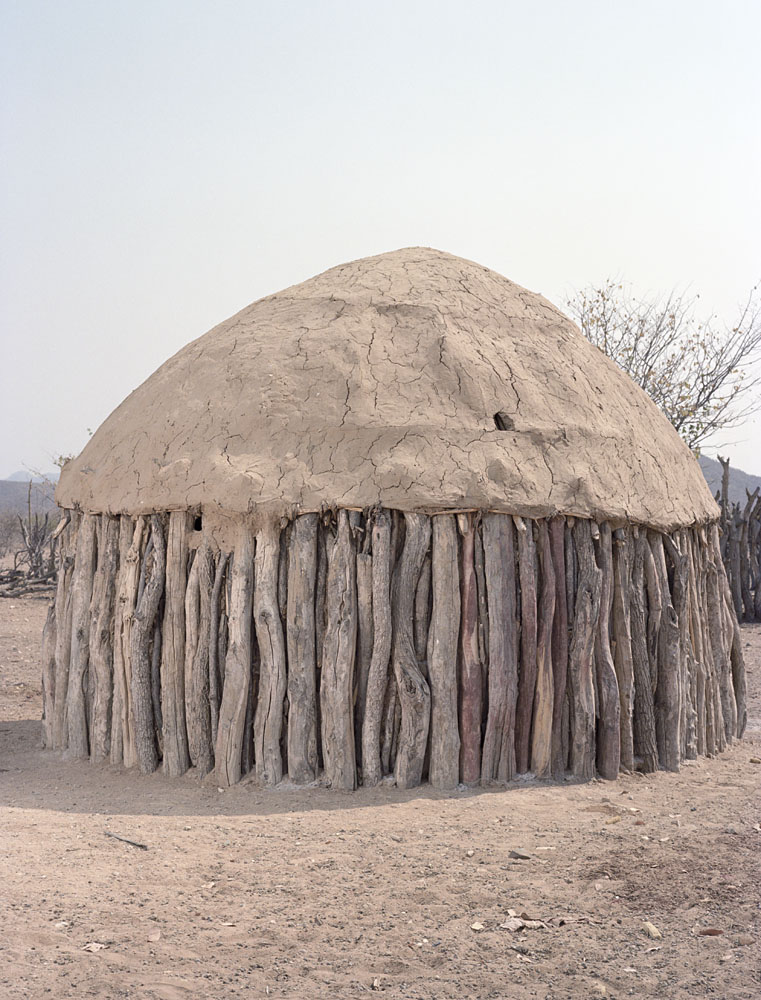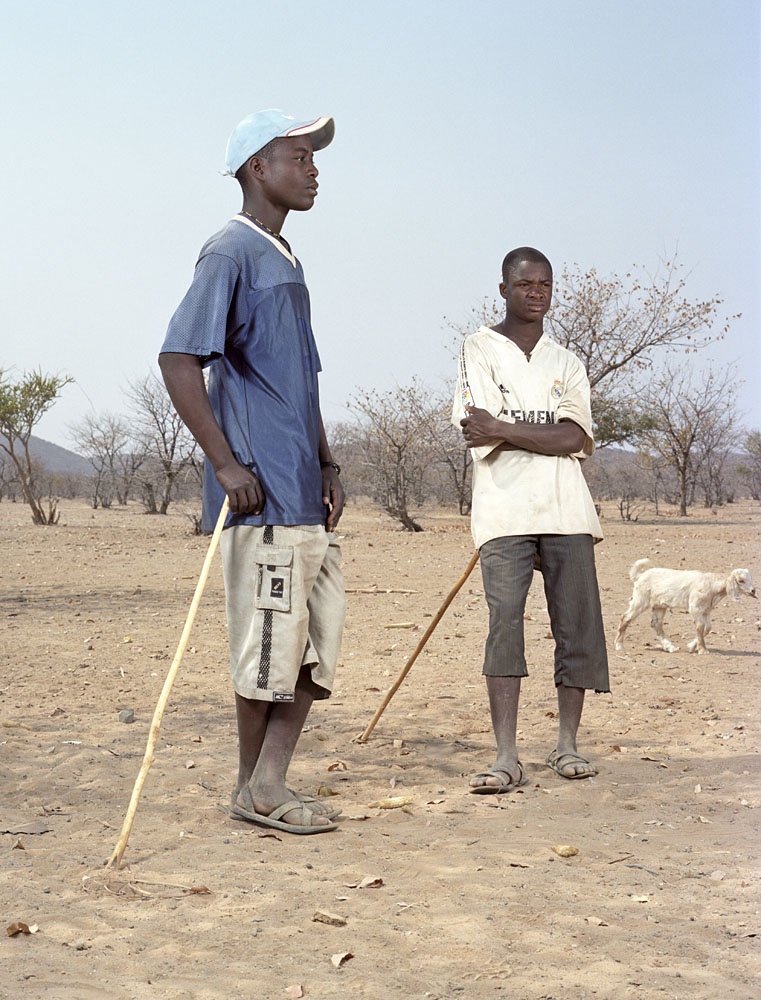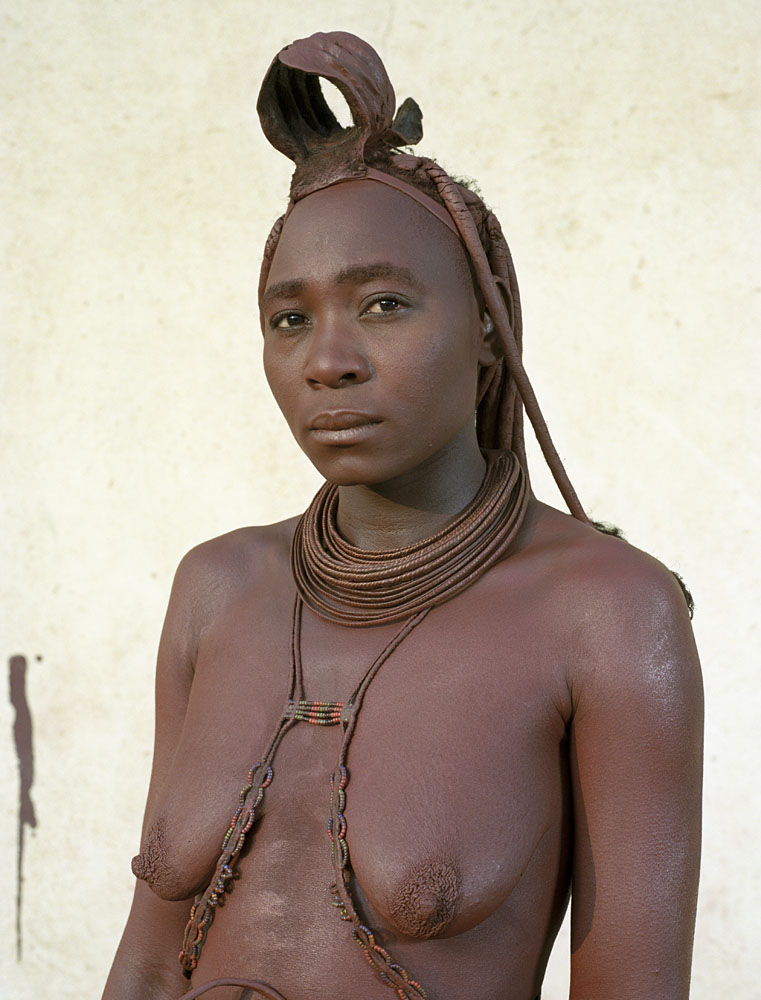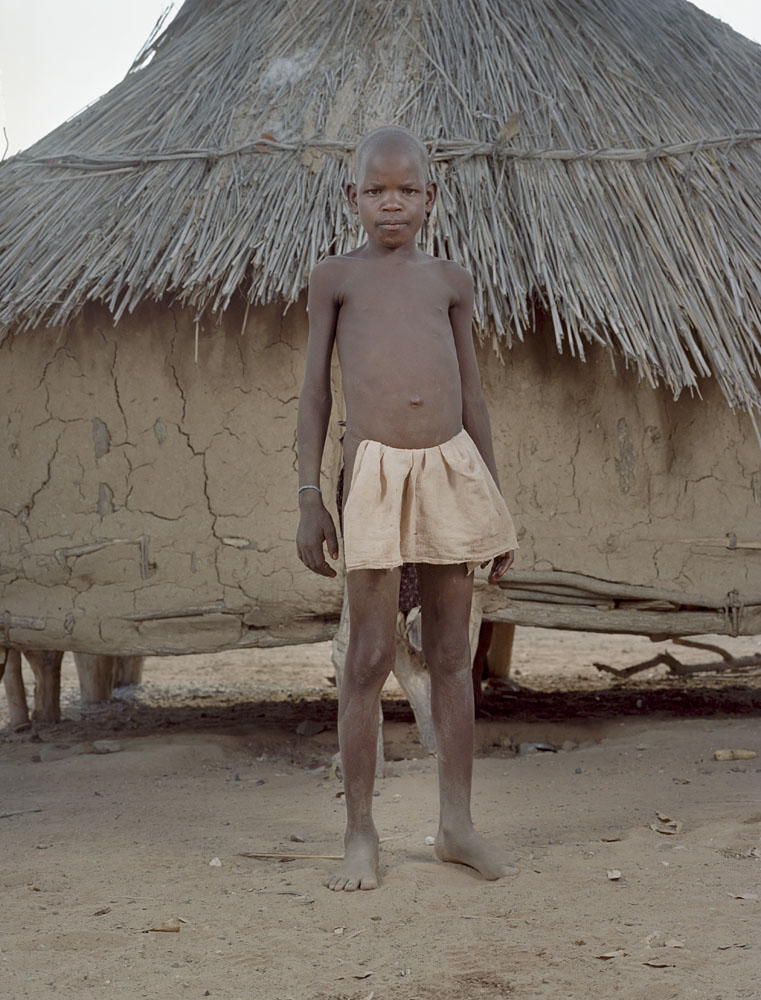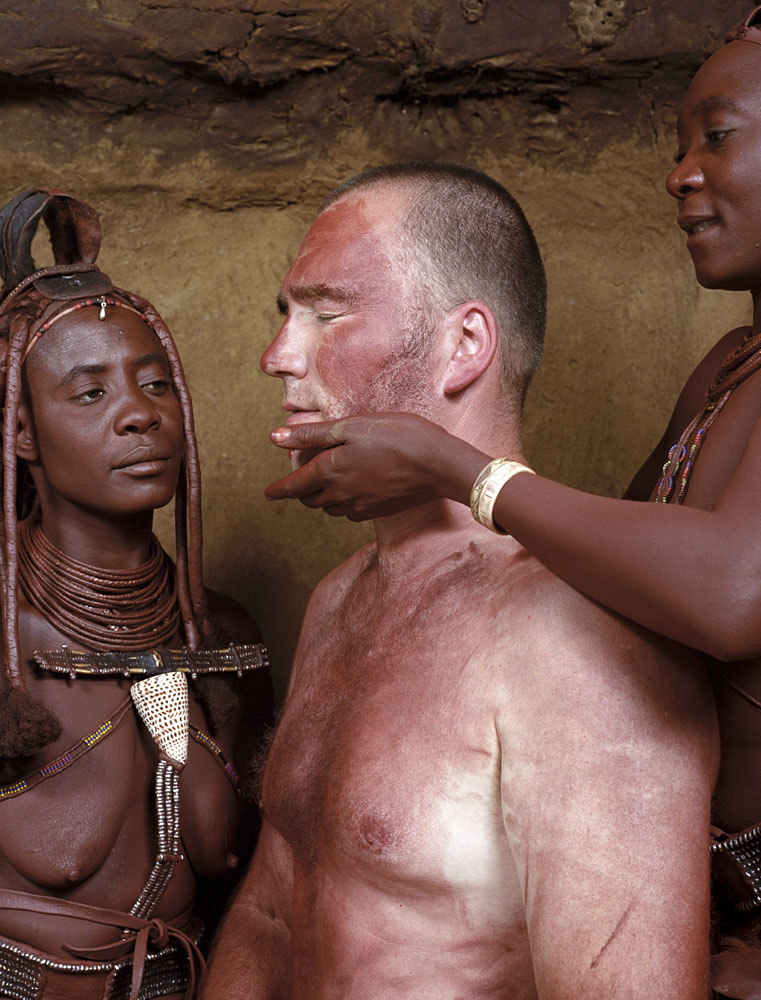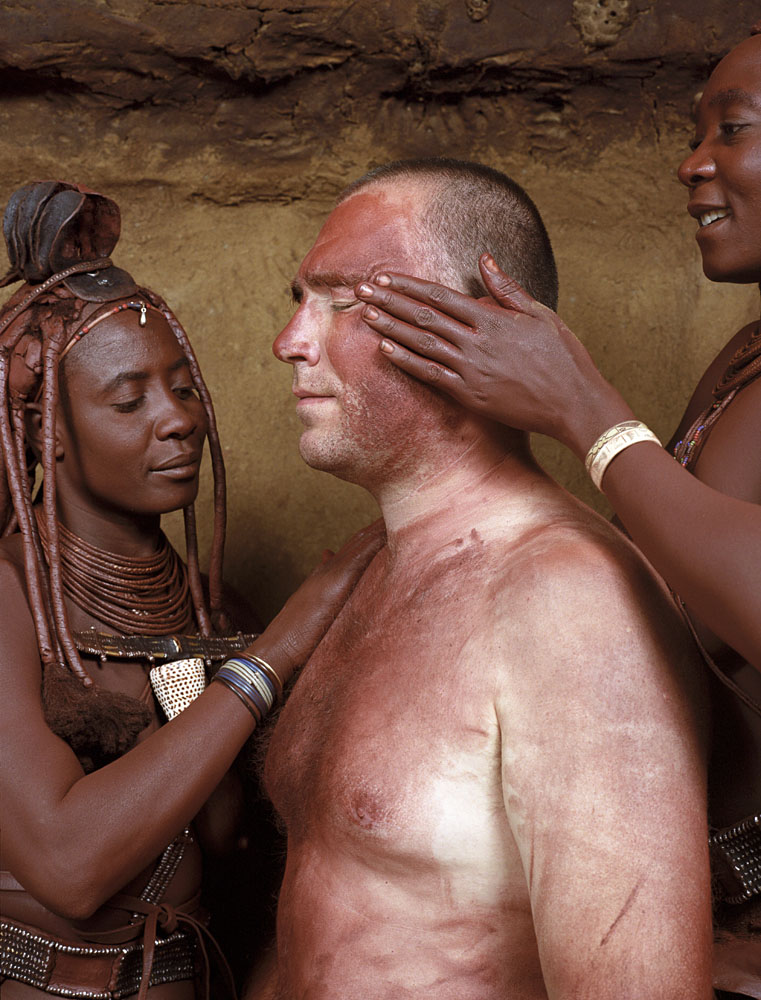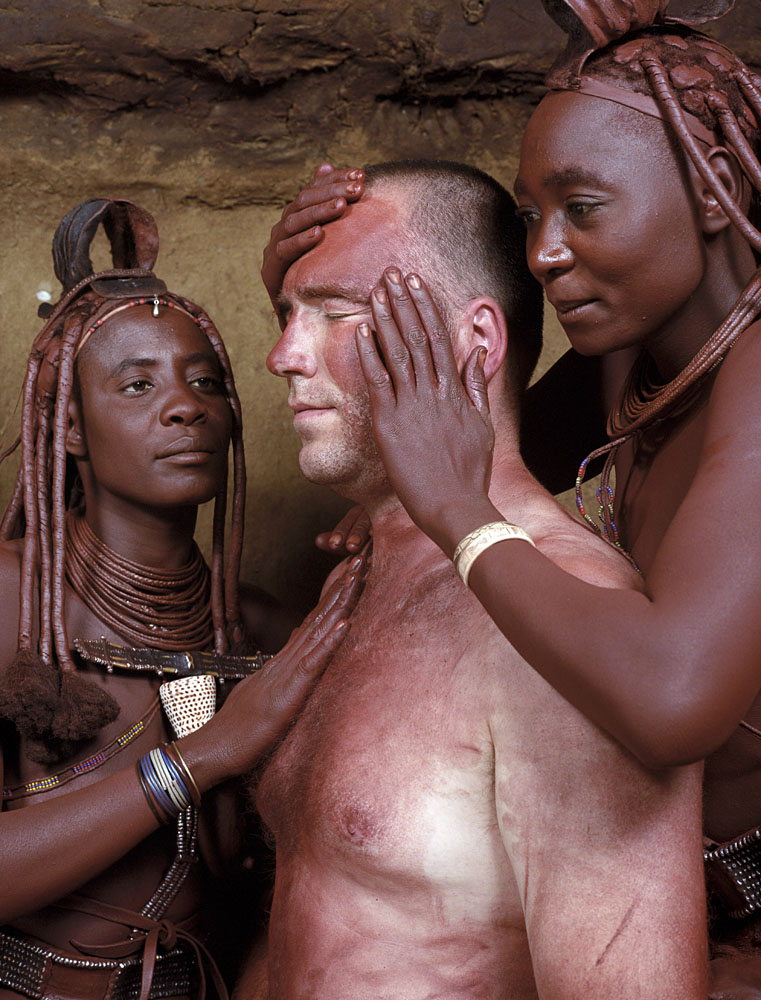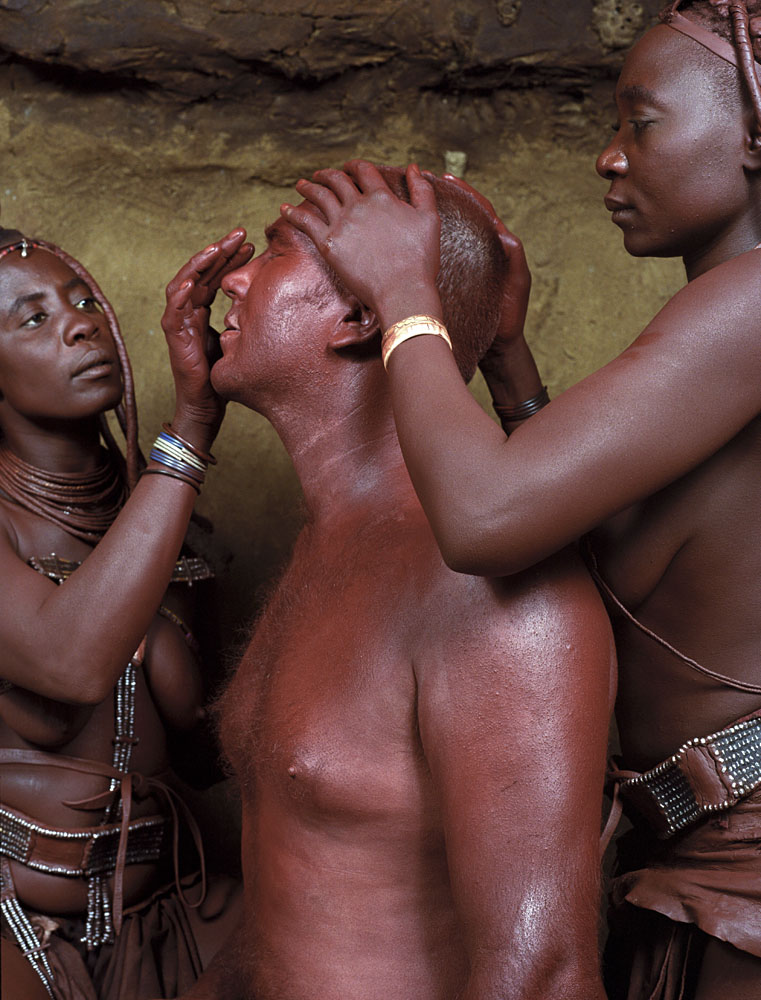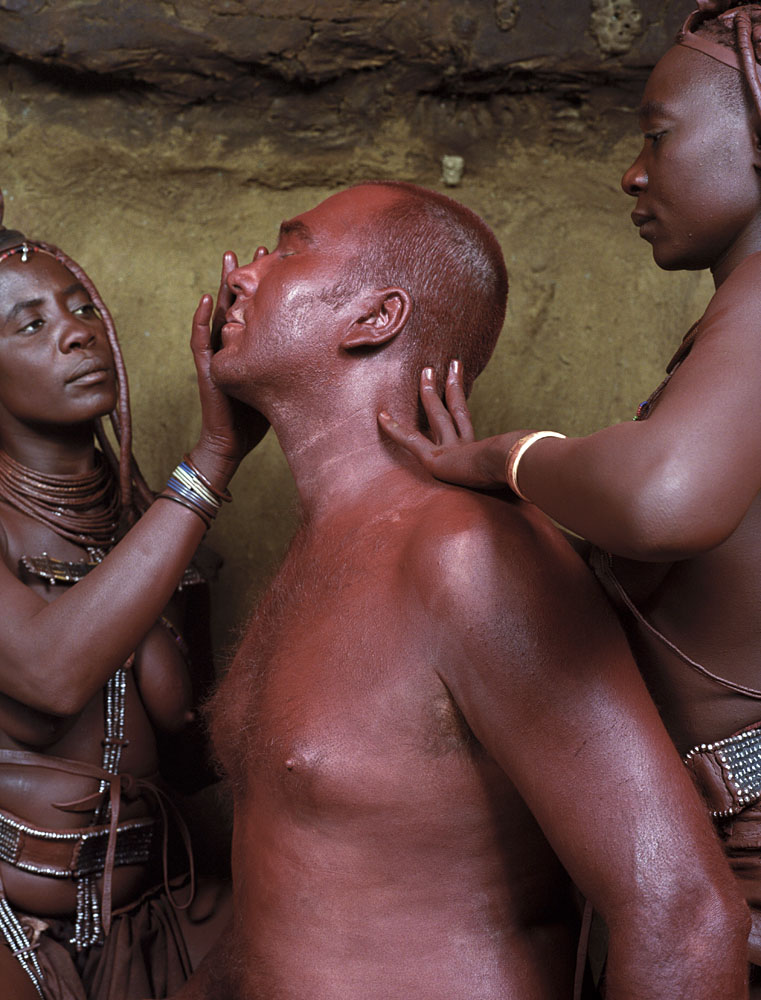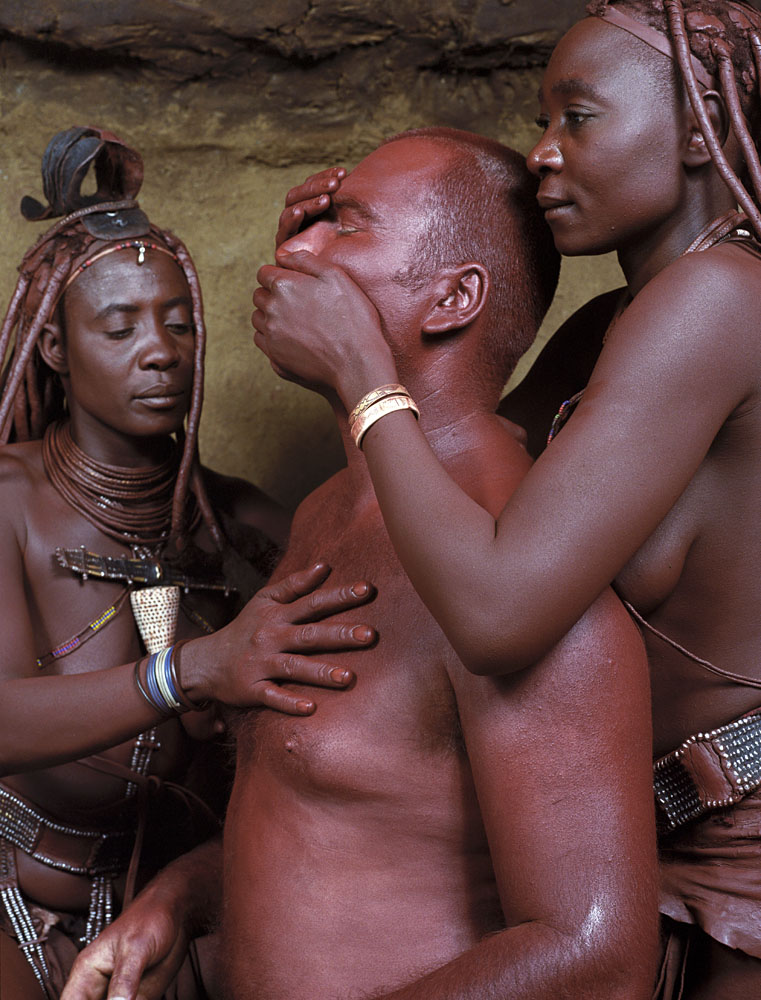The Himba are an indigenous people living in northern Namibia. They are related to the Herero people. Charles Fréger has devoted a series to the Herero as well. He went to Opuwo, near the Angolan frontier, to meet these two peoples united by a common language. The first question he asked himself was about how to represent the traditions of a tribe which, at first sight, might be considered primitive. The symbol of an individual’s belonging to the Himba community is not a manufactured uniform that they put on, an artefact elaborated according to a coded repertoire of forms and colours. The Himba uniform is literally a second skin. It is a paste made of a mixture of red ochre and butterfat spread evenly over the body and the hair. The only additions are the occasional necklace, braided hair and a loincloth. Fréger made portraits of Himba men, women and some Himba children – according to his usual formula: full-length or head-and-shoulders, often in front of a wall at the entrance to the neighbouring town, or in front of a hut in the village. There is no tension in this series; the atmosphere is one of calm. The individual is not caught up in a rhizome of signs; the dress is minimal, like the surroundings. Fréger has made more of the surroundings in this series than he usually does – it is not just background; some of the shots are pure landscape; a first for him. Beyond its tranquil atmosphere, this series played a key role in the development of his oeuvre. It was from contemplating this ancient uniform, this second skin, and from frequenting the Himba, who also accompanied him in his project on the Herero people, that Fréger sensed a possible extension of what he had begun with the Rikishi series when he crossed the tawara, the perimeter of the sumos’ wrestling ring. In doing that, he had been symbolically accepted into the ring of the community. He had a growing desire to move away from the position on the edge of things, which is the usual lot of the photographer, and to get involved. He asked the Himba to cover him with the same red paste. One of the Herero took photographs of his gradual transformation. For the first time, he passed over to the other side. He was no longer on the edge, but inside. He was no longer standing behind the camera, opposite the subject of his photograph; he was now standing side-by-side with his subject. This was the first concrete manifestation of his urge to be part of the community, to go towards the Other – and also his first experience of the hopelessness of that urge; the irreducible opacity of the Other always and inevitably kept him at a distance. The Himba series opened up a new, performative dimension in his work, which could no longer be defined in strictly photographic terms. Over the course of the following years, unrelentingly, he sought out opportunities to express this urge to gain admittance to the heart of the community, whether it was the Beijing Opera, the Royal and Republican guards in the Empire series or the people involved in the Brazilian Fantasias. He created his own opera character with costume to match, a guards uniform for himself; he even had his own carnival float.
